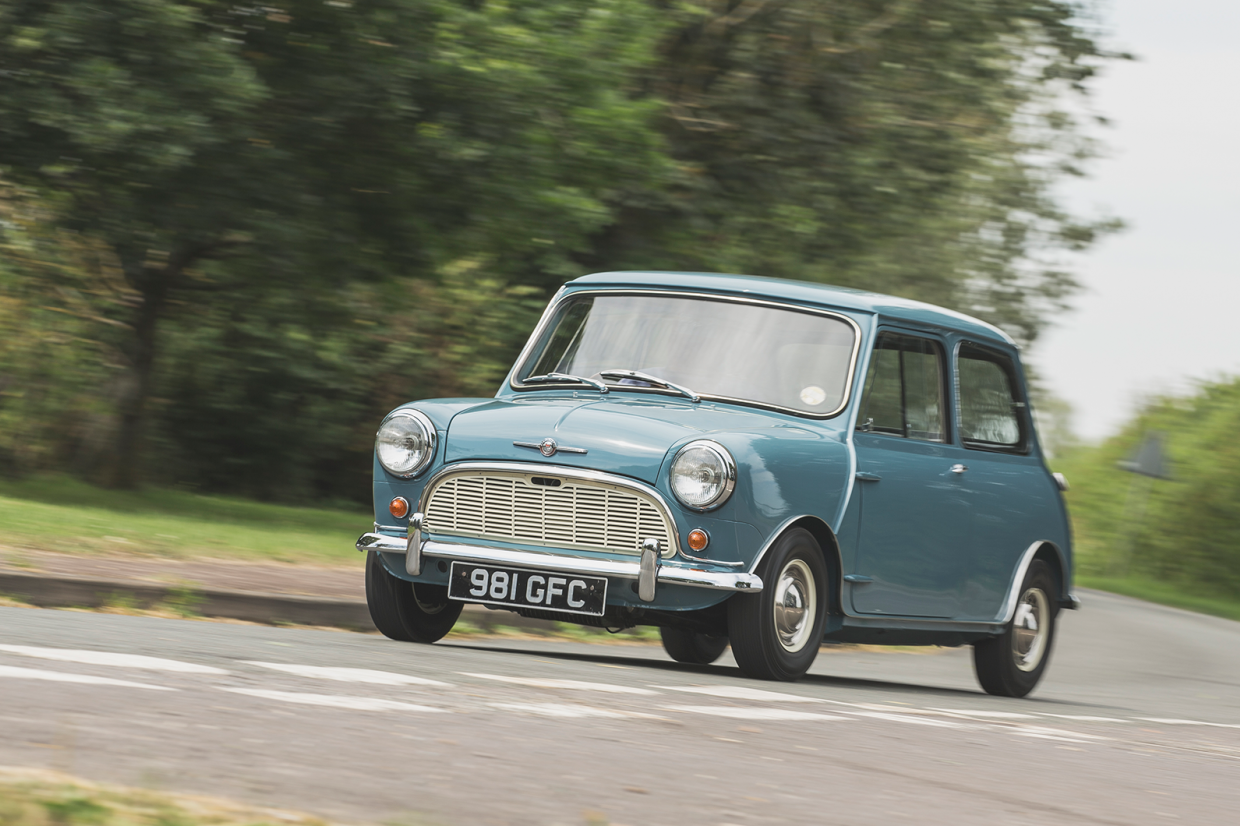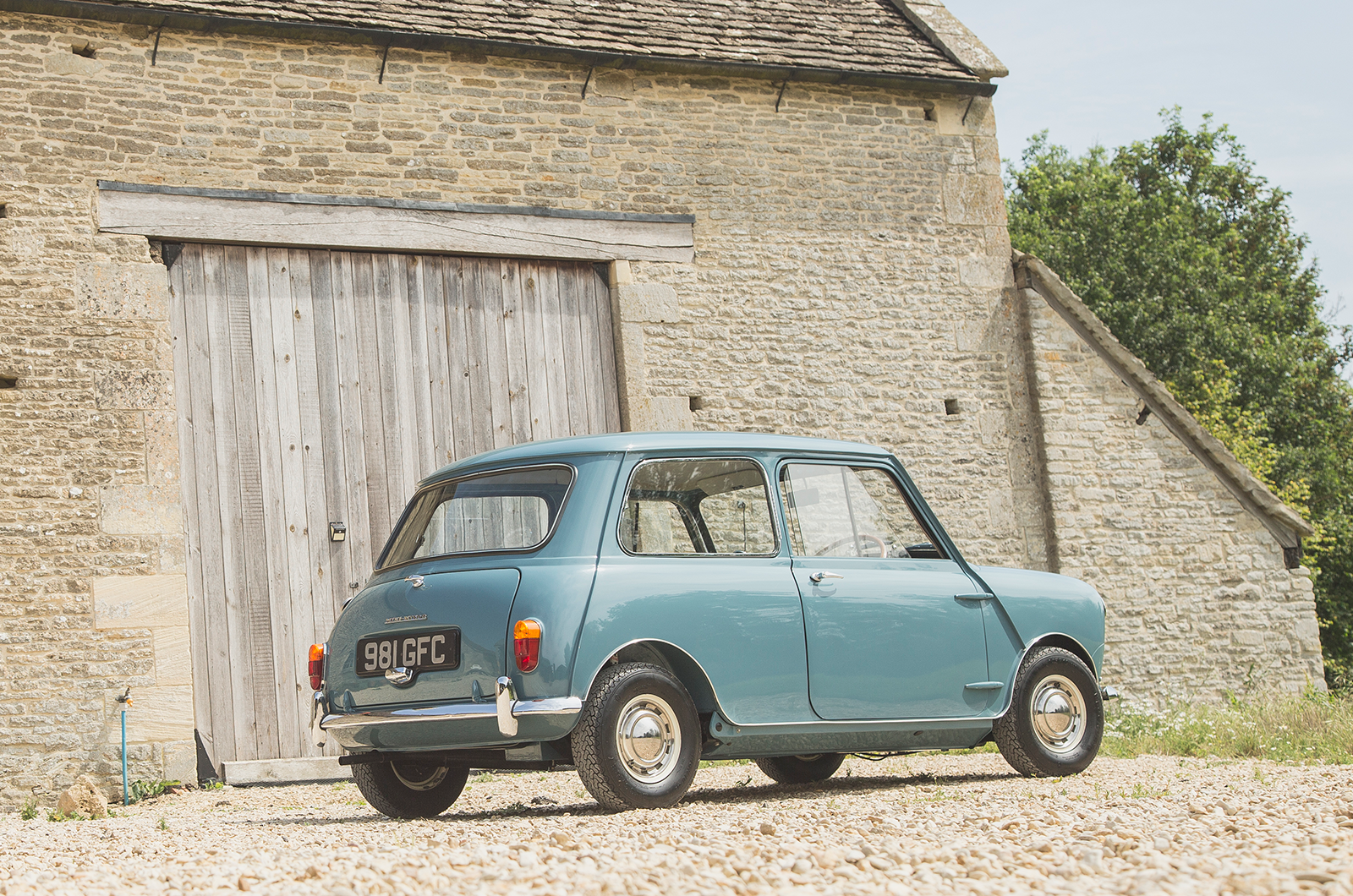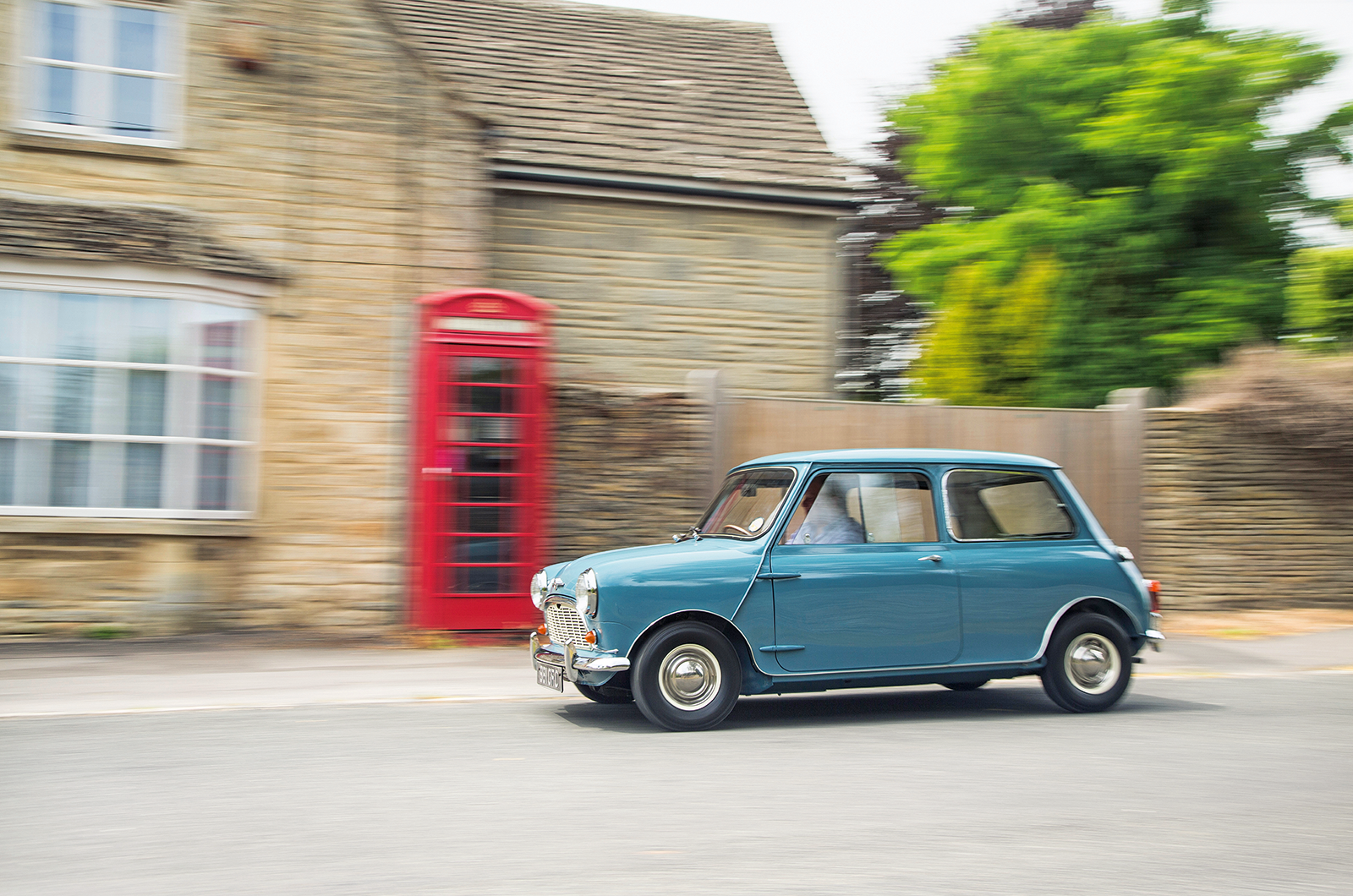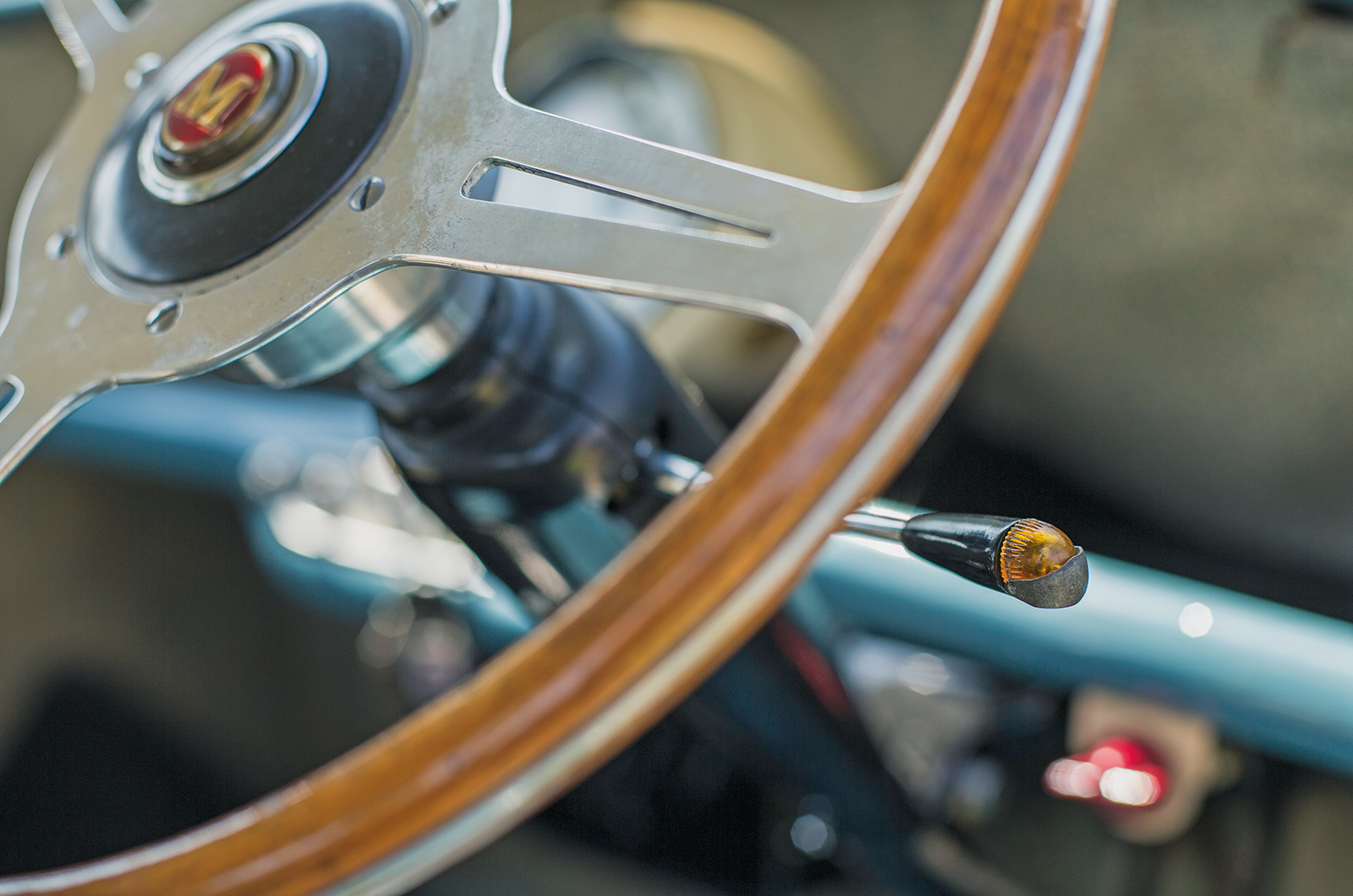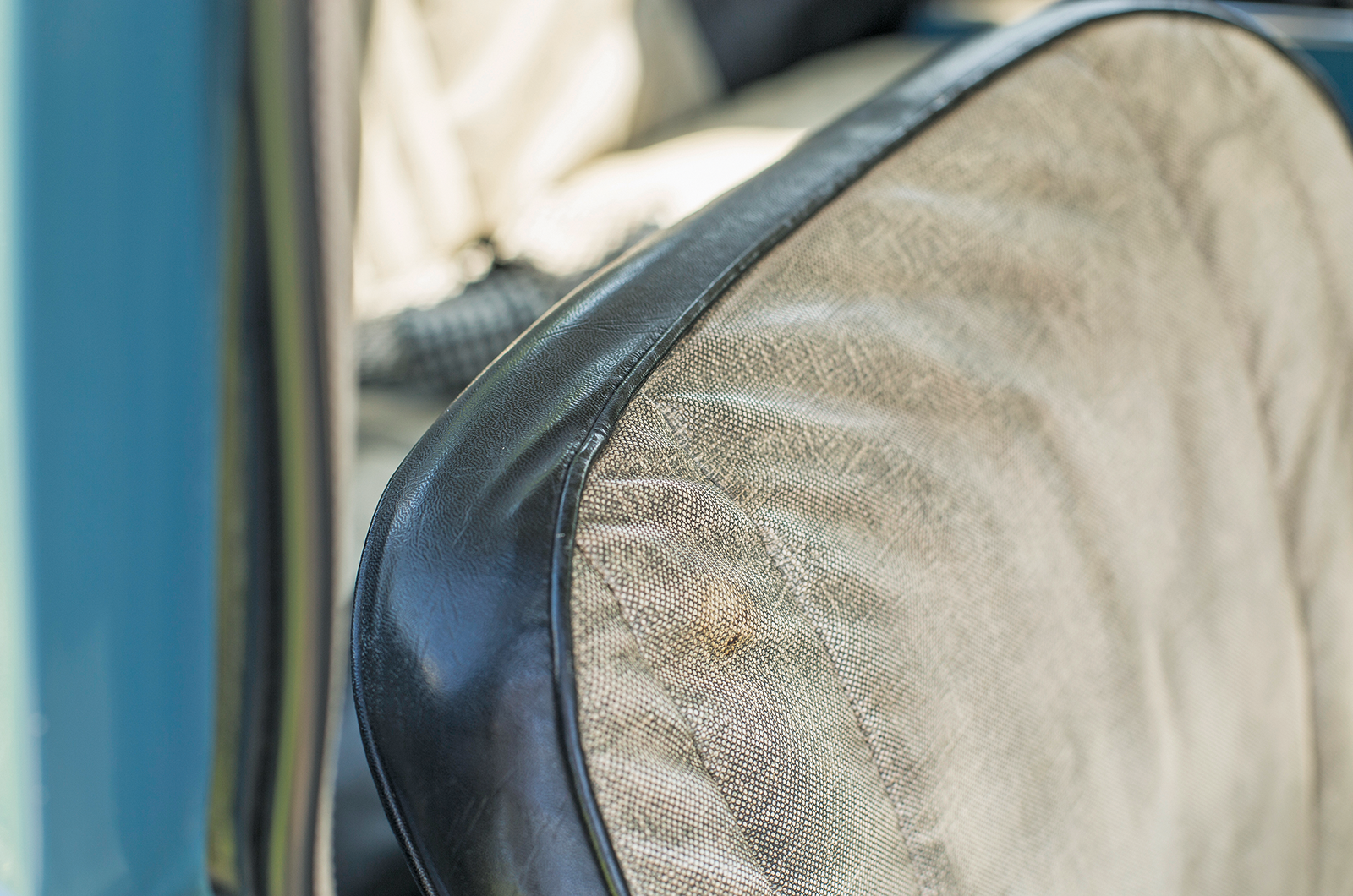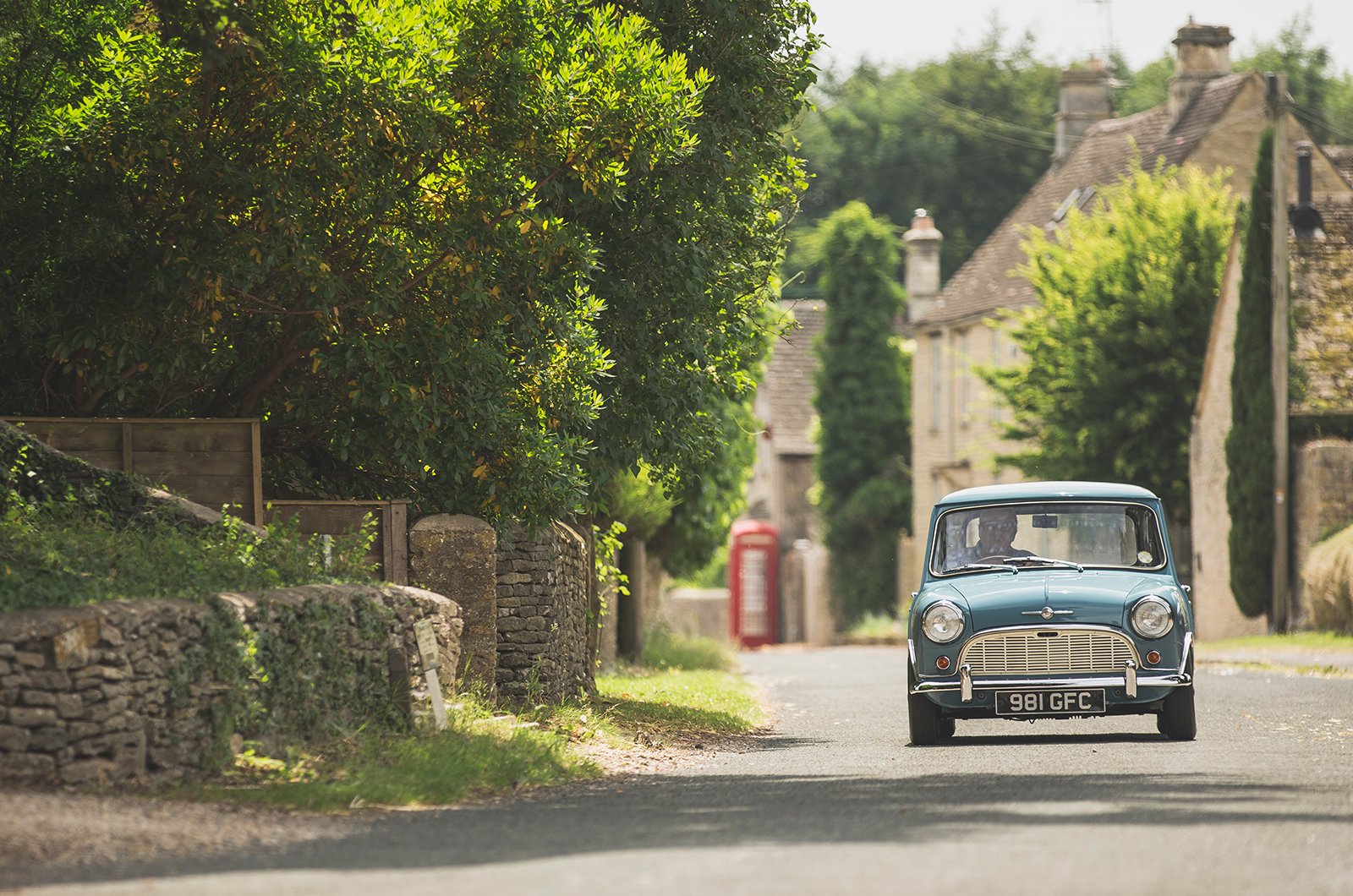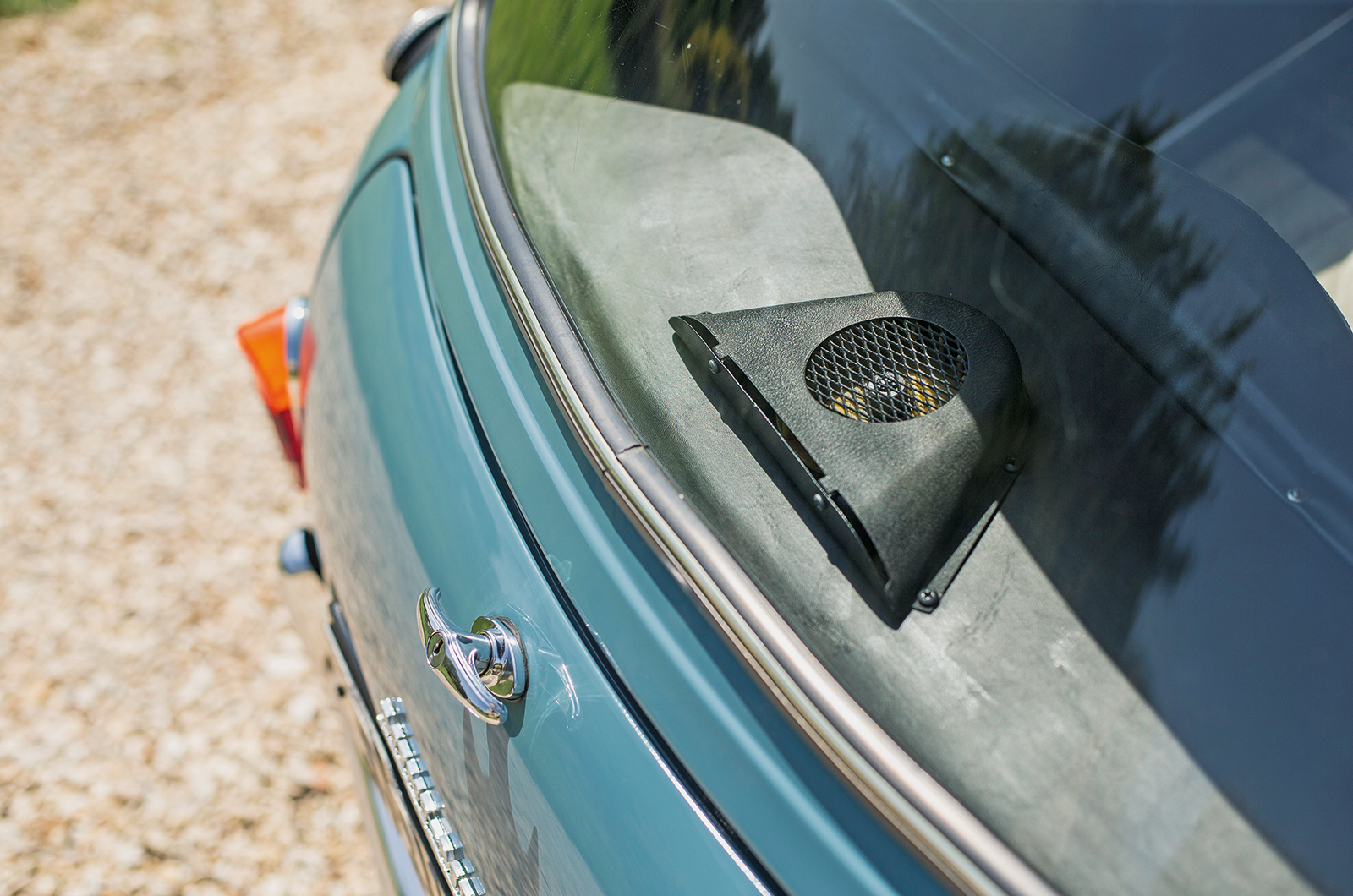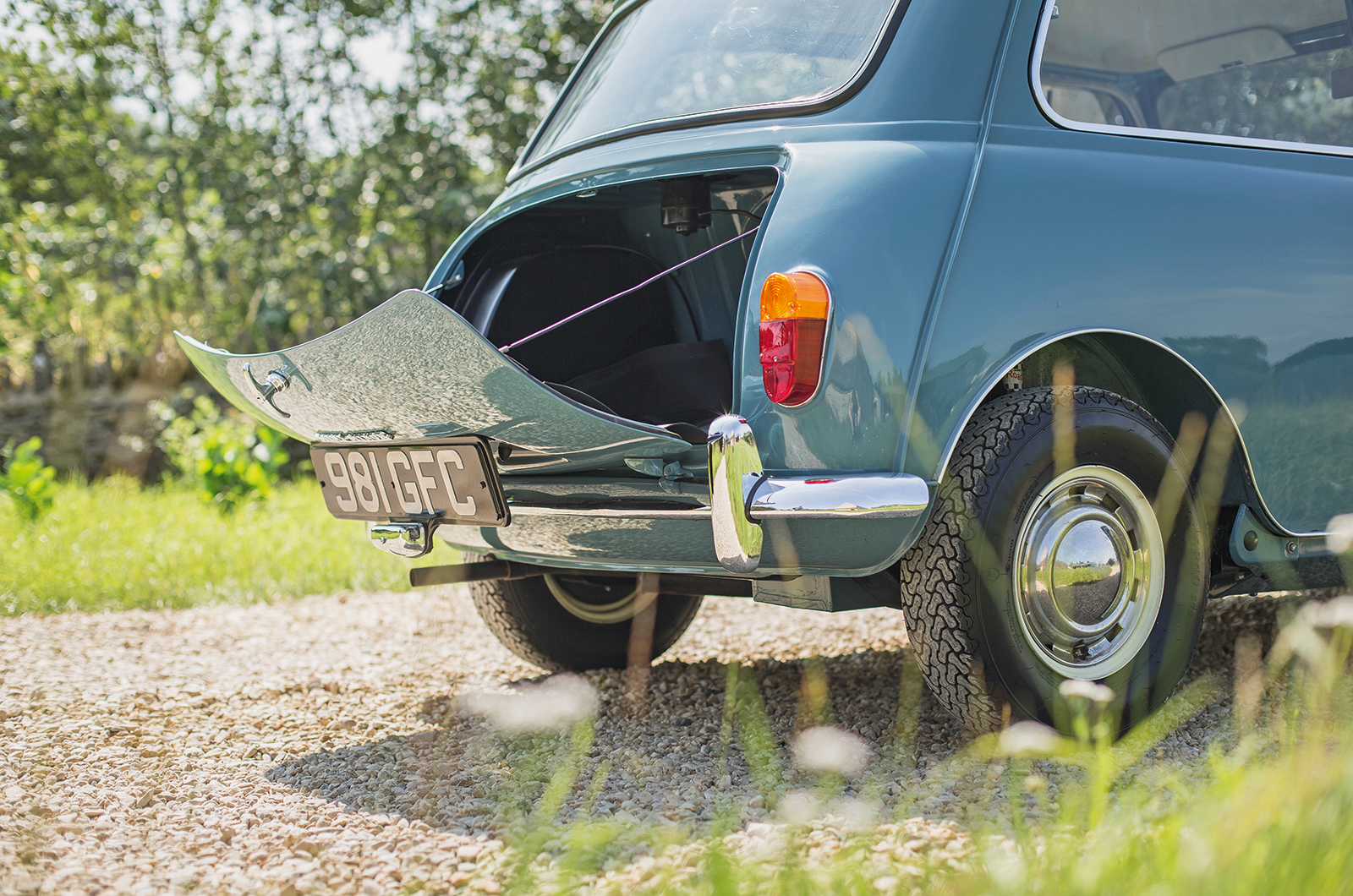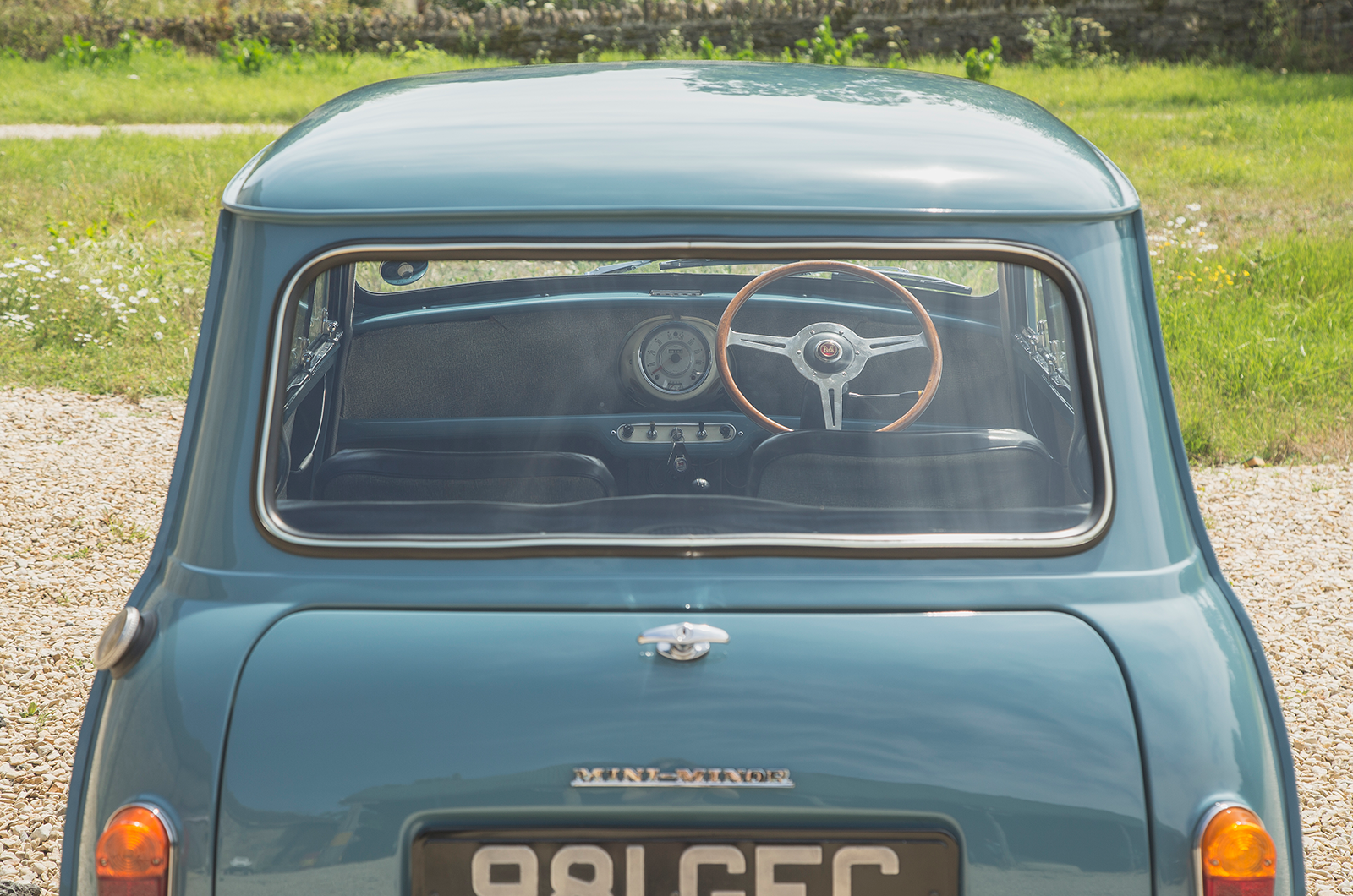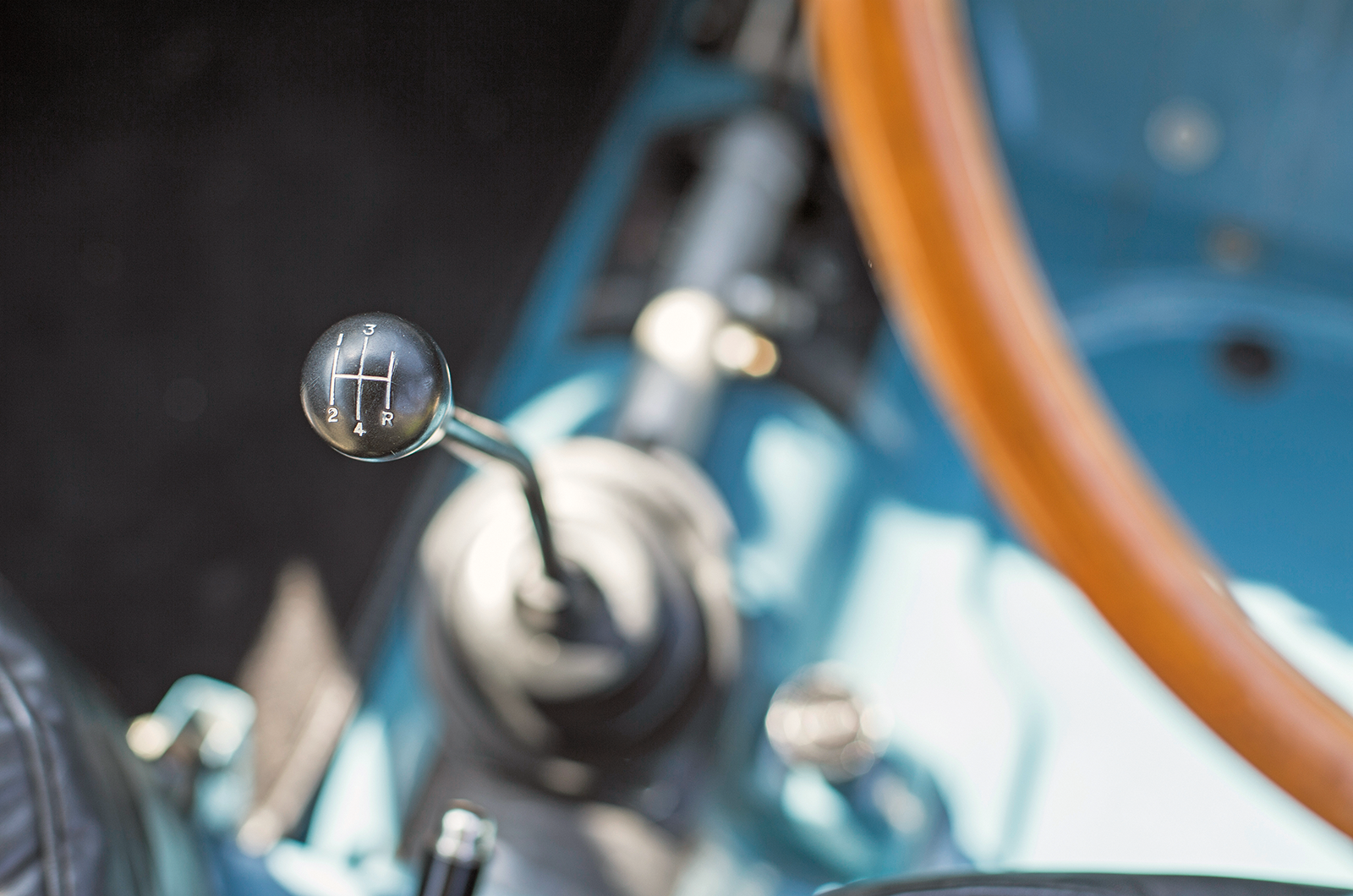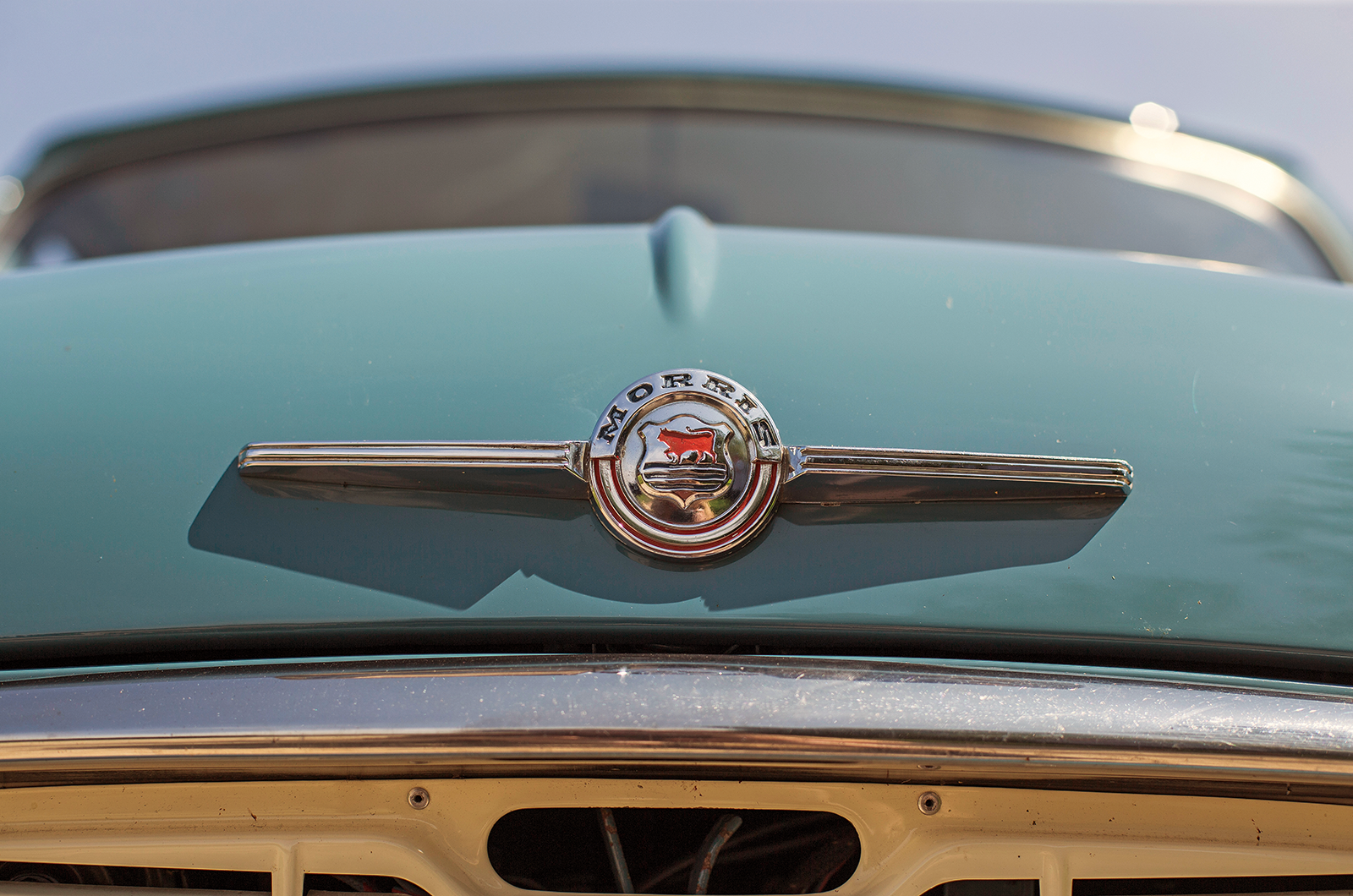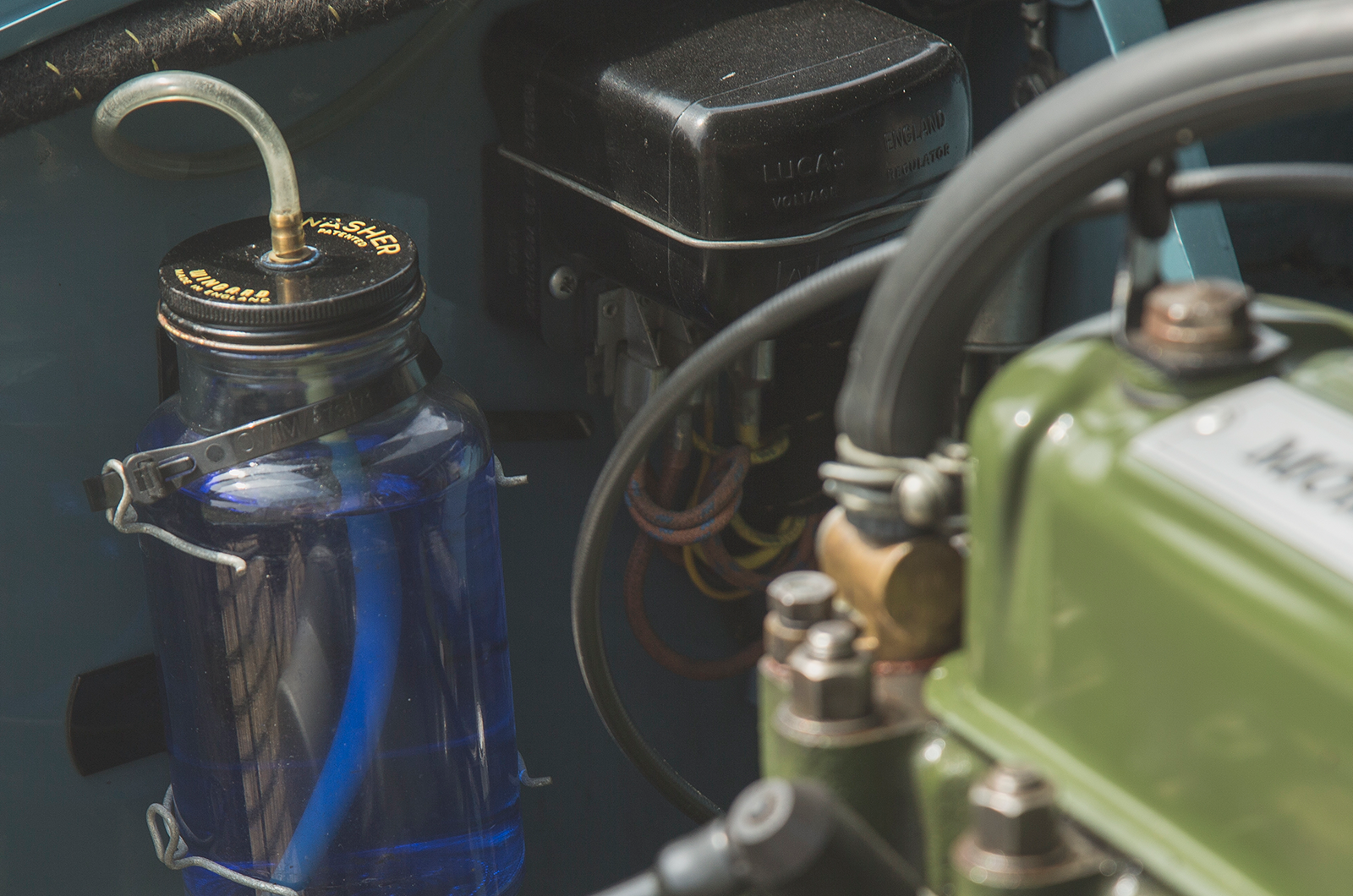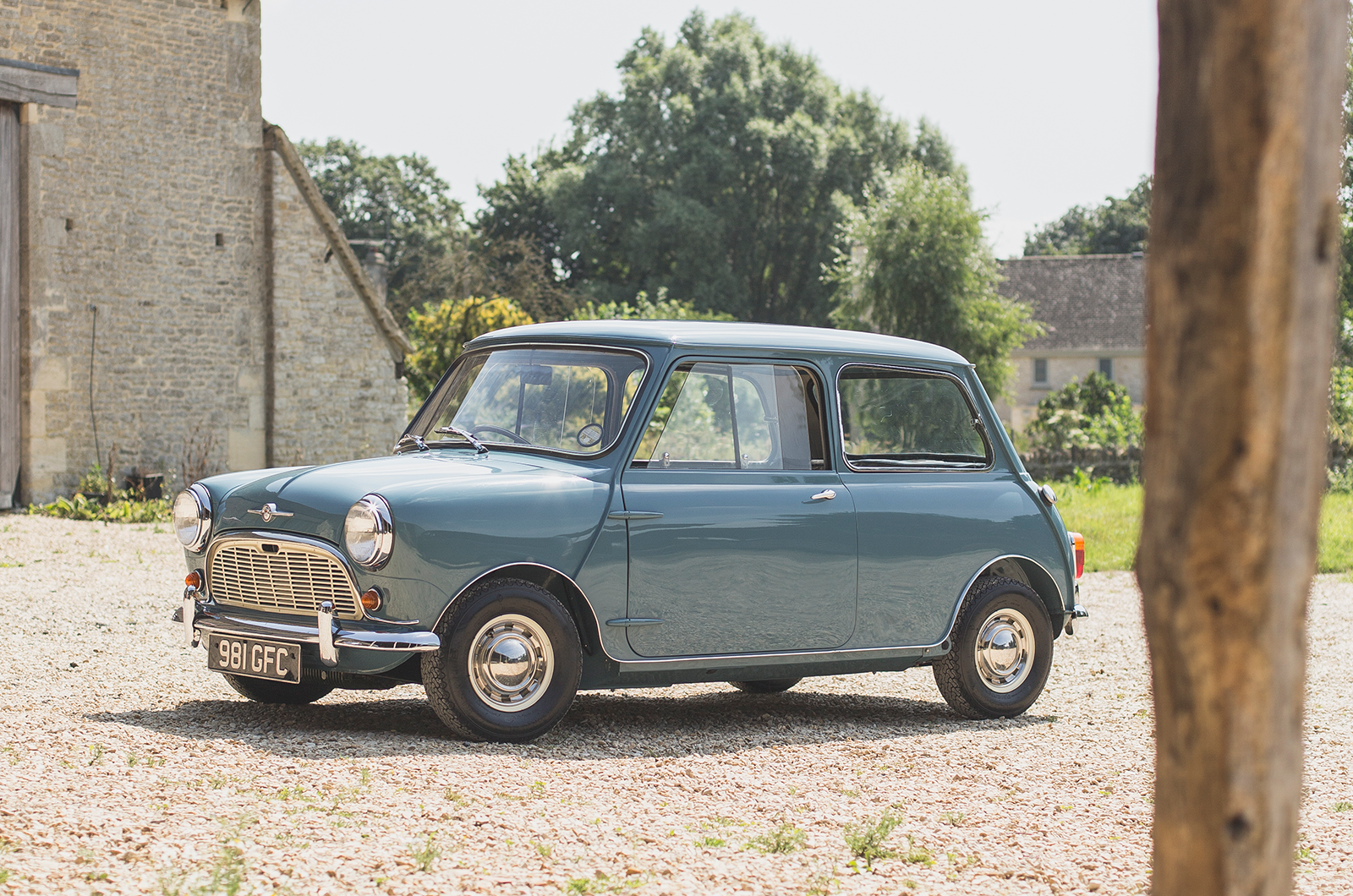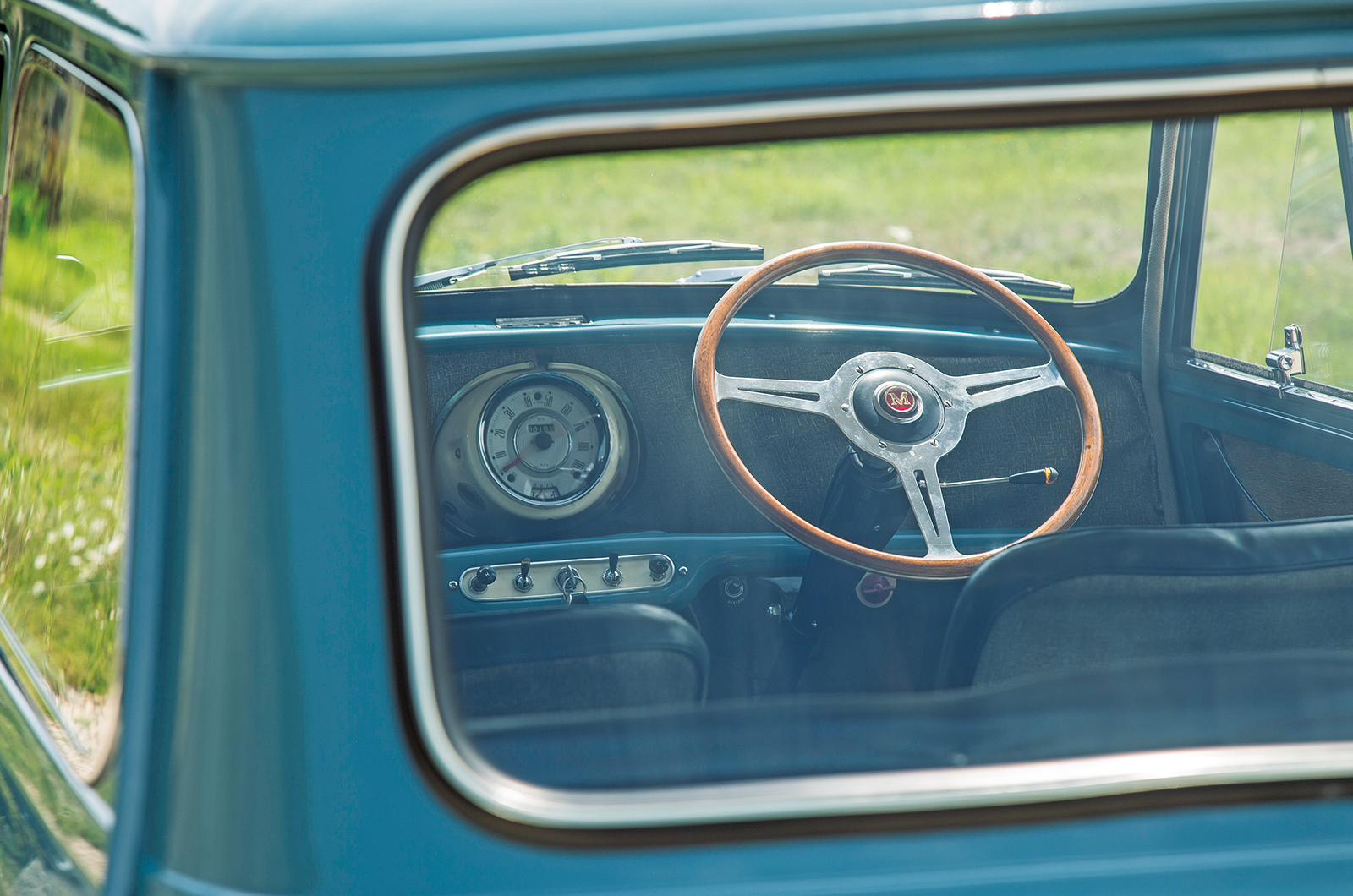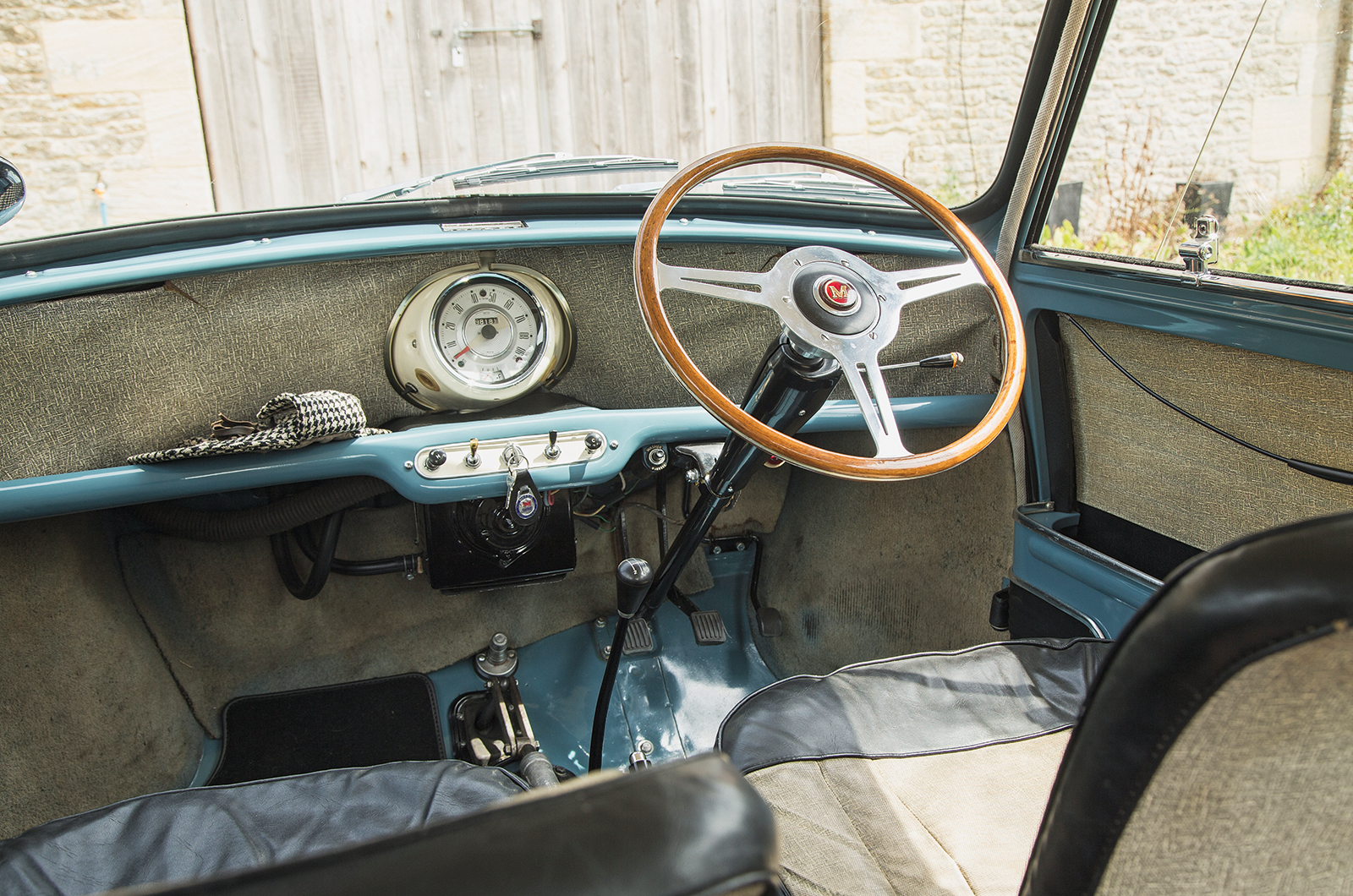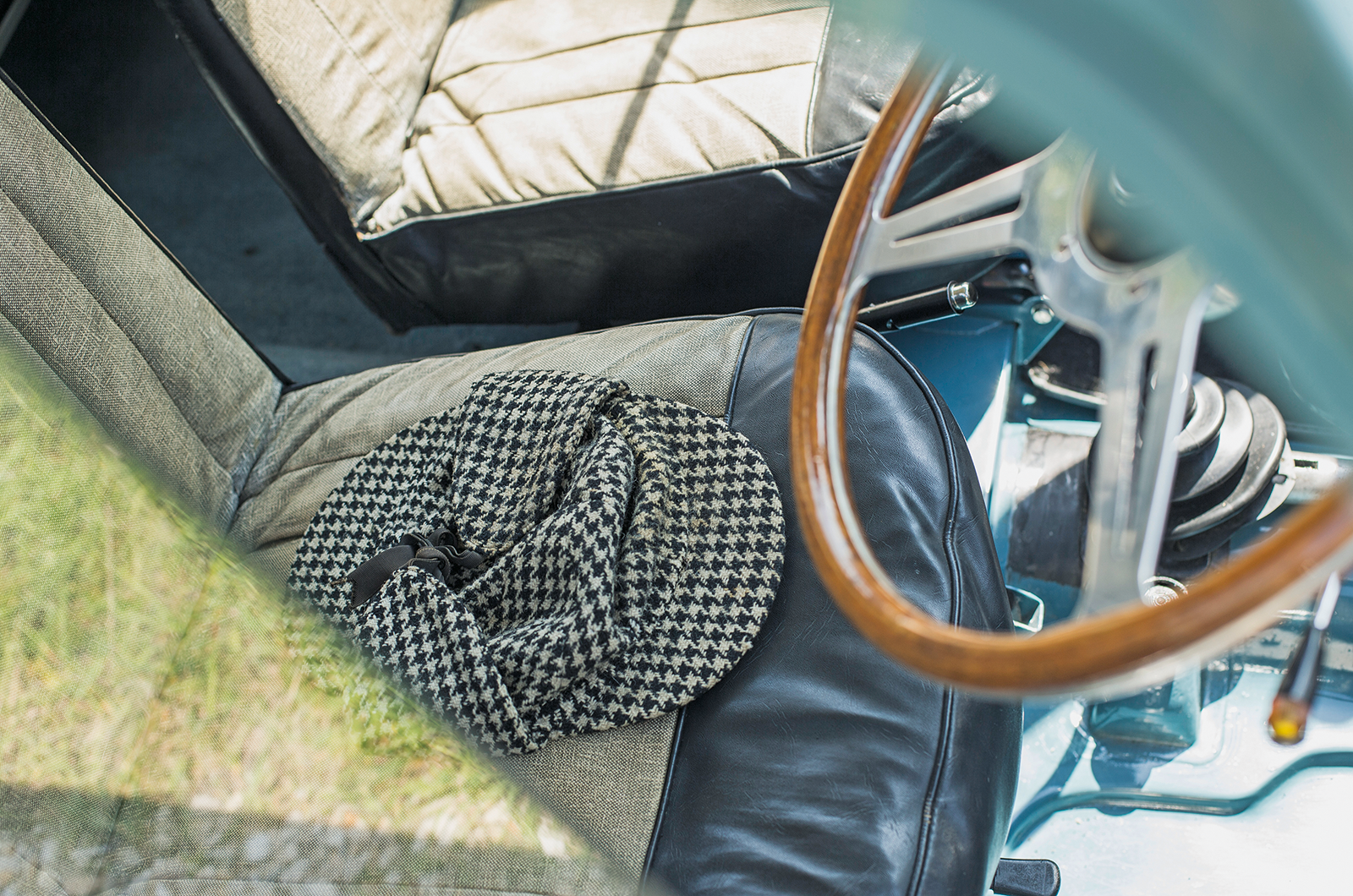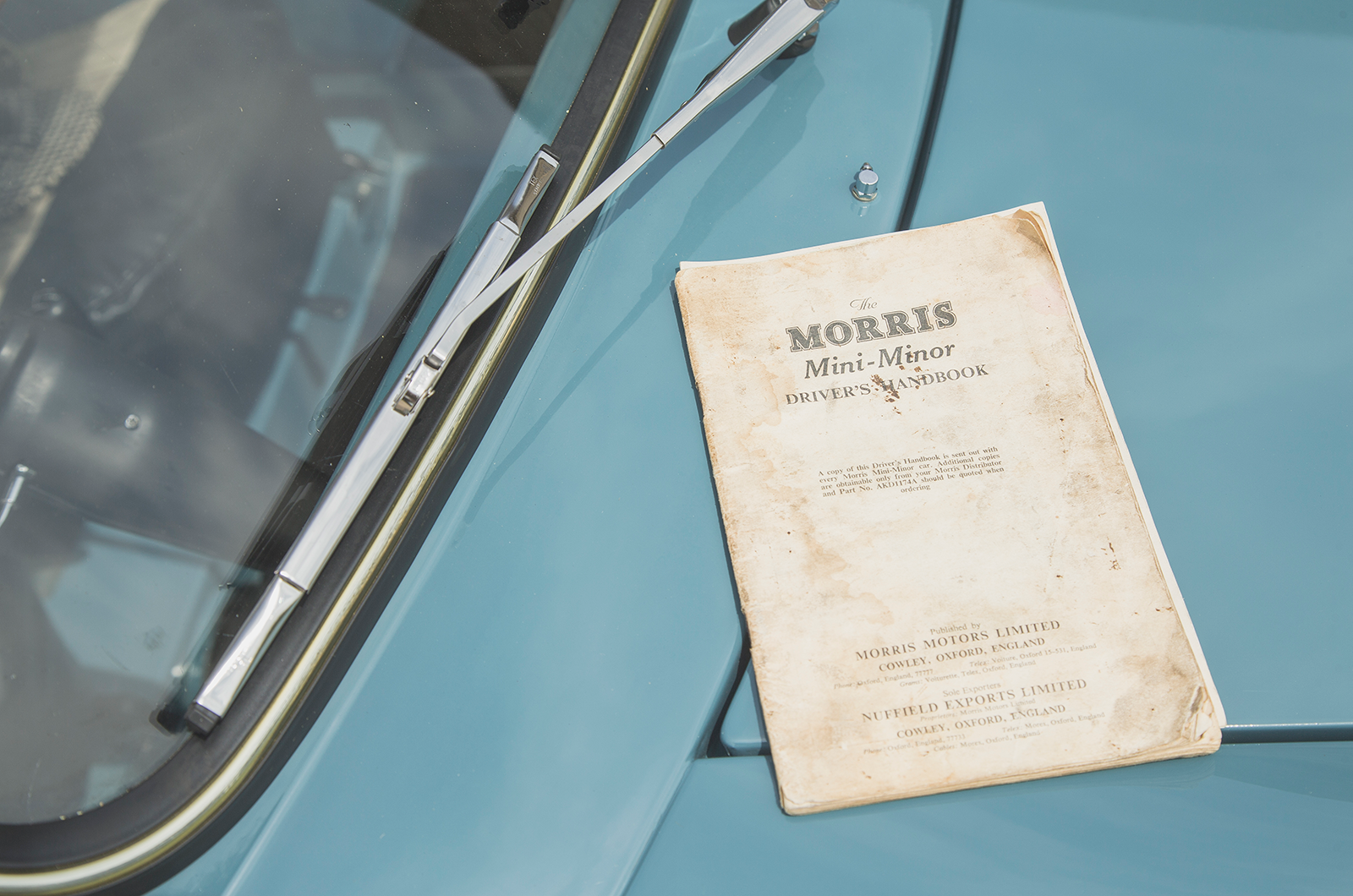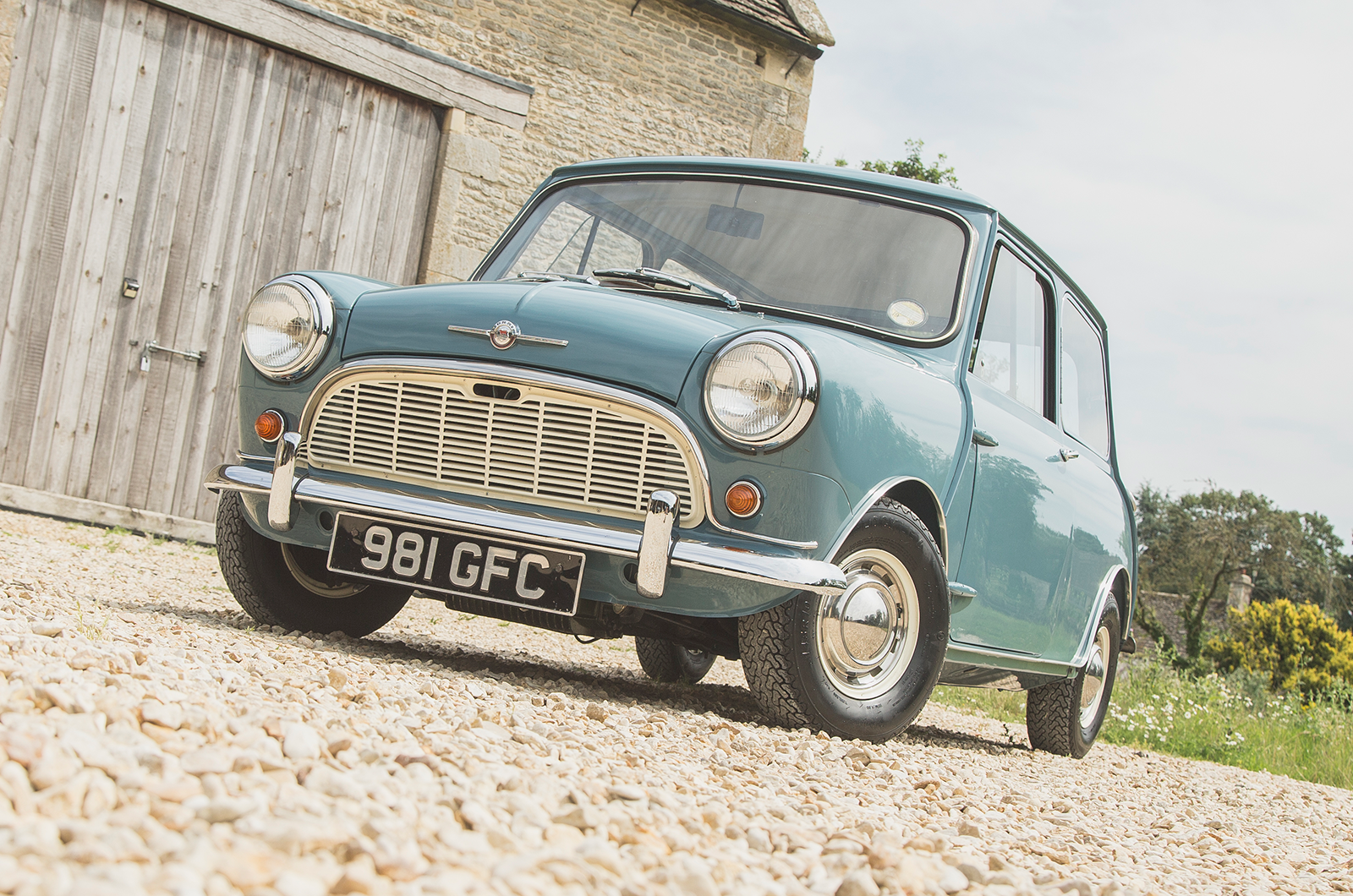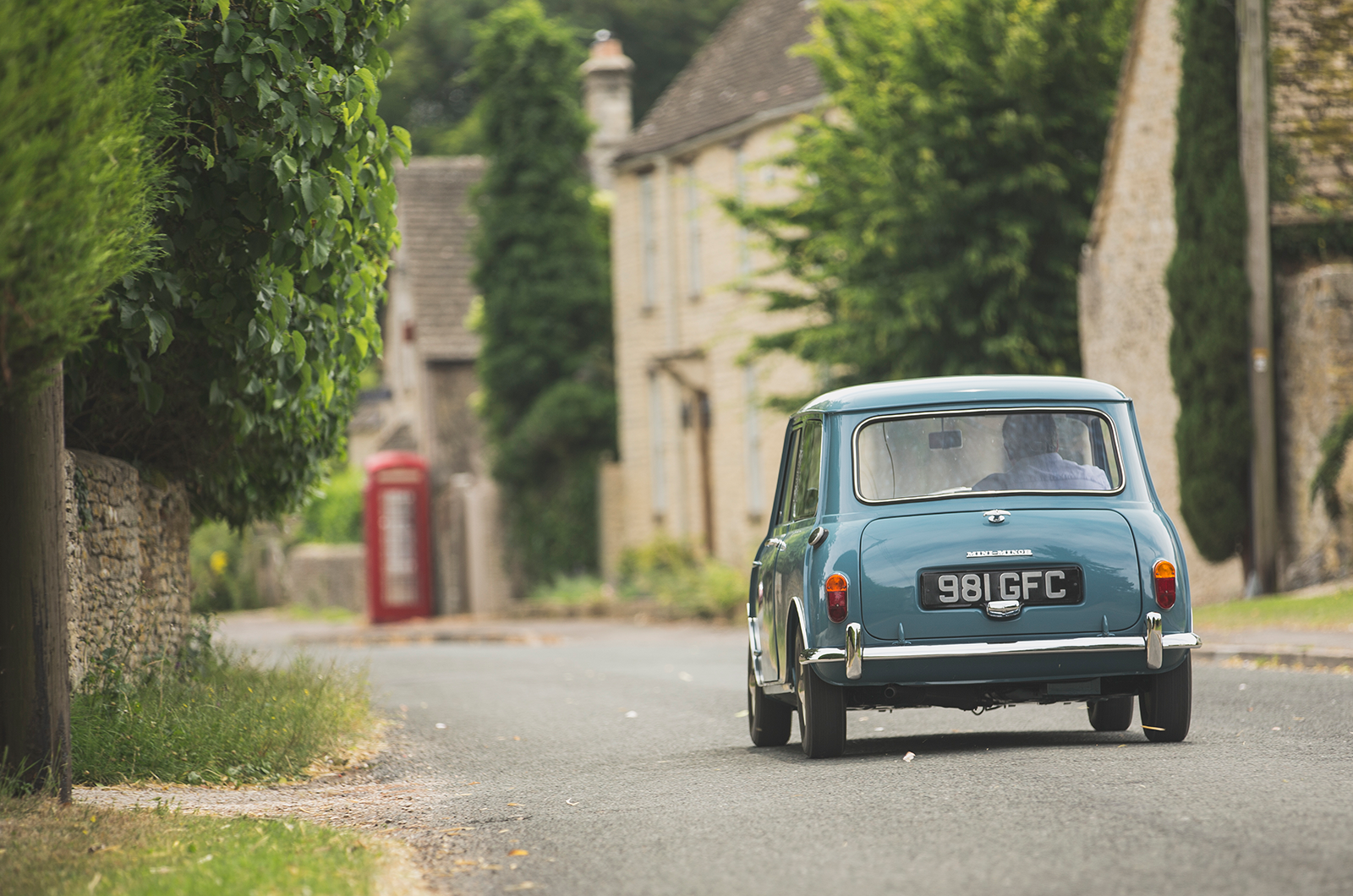The ’screen washer, with its glass bottle, is part of the mystique of the first cars: they were soon changed to plastic when they began to crack in icy conditions.
Naturally, aficionados of the early Minis get very excited about these Wingard Bottles (Powrie has been offered £1500 for his) – ditto the super-rare A-frame jack, the heater attached by three (rather than four) bolts and those riveted 10in wheels. The ones that split when used in anger, a problem Issigonis would never admit to.
Rust issues came later, although it’s interesting to note that Austin and Morris versions of the Mini were made in different factories and even the steel to build them came from different sources.
The Morris cars were built in fractionally thicker-gauge steel and have tended to last better than the Austins, apparently.
The 848cc A-series engine is a joy and very flexible
Also part of 1959 Mini lore are the water ingress problems caused by the design of the floorpan, and the fact that the roof gutters had no drainholes.
Deluxe versions, such as this one, had twin sunvisors, an ashtray and extra chrome.
Beautifully preserved as it is, 981 GFC gets driven to events and is no trailer queen.
“I don’t think the SPQR change is all that marvellous,” says Powrie, as he sends me off in this precious piece of recent British history, “and the rear ’screen blower is not very good either – but find me another one. It’s useless, but rare!”
This classic Mini is well cared for, but no trailer queen
I have had so little to do with Minis over the years that driving this one is something of a minor epiphany.
It is tiny, of course, compared to almost anything modern. Yet it has a dignity about it, sitting so confidently four-square on its little 10in wheels.
It projects a timeless sense of purpose by making every inch of its footprint count, with no space for flab.
It’s easy to get into, the vision all round is sublime and the use of space in the door bins, on the dashboard and under the seats is pure genius.
The flecked trim on the fascia and seats is the original, slightly faded ICI vynide, with Bolster’s nicotine-stained fingerprints still in evidence; Powrie even has one of Bolster’s own deerstalkers on the rear shelf, kindly donated by his stepson.
This might boast ‘Deluxe’ trim, but the interior is spartan – note the genuine John Bolster deerstalker hat and period paperwork
Press the floor-mounted starter button, slot it into first and accelerate away to the shrill whine of the transfer gears in a ’box where changing down is difficult to achieve without a crunch.
The 848cc A-series engine is very flexible, so Powrie recommends starting off in second and doing most of your driving in third – which is good for a heady 60mph – then saving the relatively high top for motorways.
Whatever the gear there is an infectious enthusiasm to the way the Mini, even in its most basic 34bhp form, picks up speed.
Bolster kept his Mini until poor health meant he passed it to his stepson
In a world where small cars meant small performance, the light, big-hearted Mini was something really new, with acceleration to match many 1½- and 2-litre saloons and to make a nonsense of all the bubble cars in which 50mph was terrifying, never mind the stable 70mph-plus that this astonishing BMC baby was good for.
It was a relatively short step, from here, to the thrills and spills of the various Cooper versions.
Driving it at something near its potential at every opportunity feels both natural and safe, with its superbly precise yet light steering and an immediacy of response that set standards by which front-wheel-drive cars would be judged for decades – and in some ways still are.
Superbly agile without being nervous, it hardly rolls at all on its rubber springs, but this does not come at the expense of the ride, which is lively but not harsh.
While in Bolster’s stable, this Mini lived alongside, among other cars, a Rolls-Royce Silver Ghost
Like the brakes (which are good) you don’t really think about it, but just revel in the feeling of this cheeky, cheerful car.
It speaks directly to the little child inside you who still remembers the sensation of piloting a homemade go-kart for the first time.
Something about the uncorrupted dynamism of the Issigonis Mini captures that feeling viscerally: there has never been anything quite like it since.
The Mini is as cheeky and cheerful as a classic as it was when new
Cars intended for relatively impoverished people were not supposed to be this much fun 60-odd years ago.
In 1959, cheap generally meant miserable: bus, bike, Shanks’ pony or a clapped-out pre-war saloon.
It’s hard not to drift into tired clichés of the ’60s when writing about Minis but it cannot be denied that, as well as driving the bubble cars off the road, the Mini had all sorts of unintended social effects that chimed in with the spirit of the times.
Only BMC, bungling yet alternately brilliant, could have produced such a masterpiece and failed to earn a payday out of it.
John Powrie could easily earn one out of this car, too, but he is not especially motivated to do so.
He is a great custodian of 981 GFC: “People tell me that she should be in a museum, but any future owner would need to appreciate the car and its history as much as I do.”
Images: Luc Lacey
READ MORE
Simca 936: the French Mini that never was
60,000 miles around the world in Minis
Lombardi Grand Prix: supercar in miniature
Martin Buckley
Senior Contributor, Classic & Sports Car
